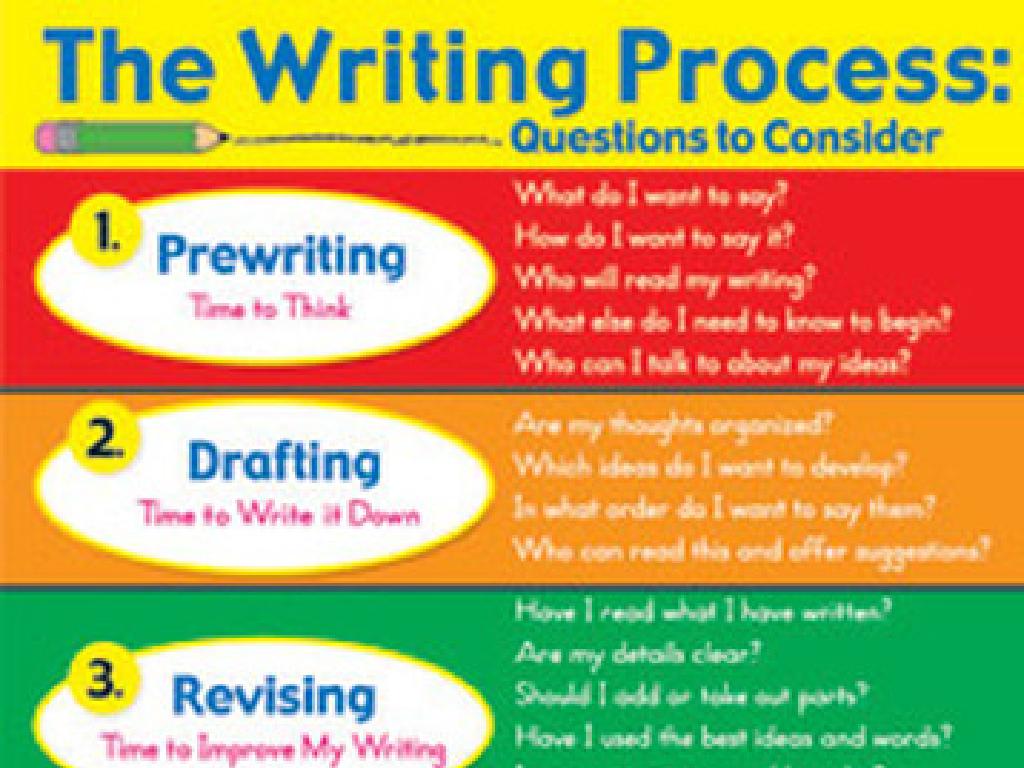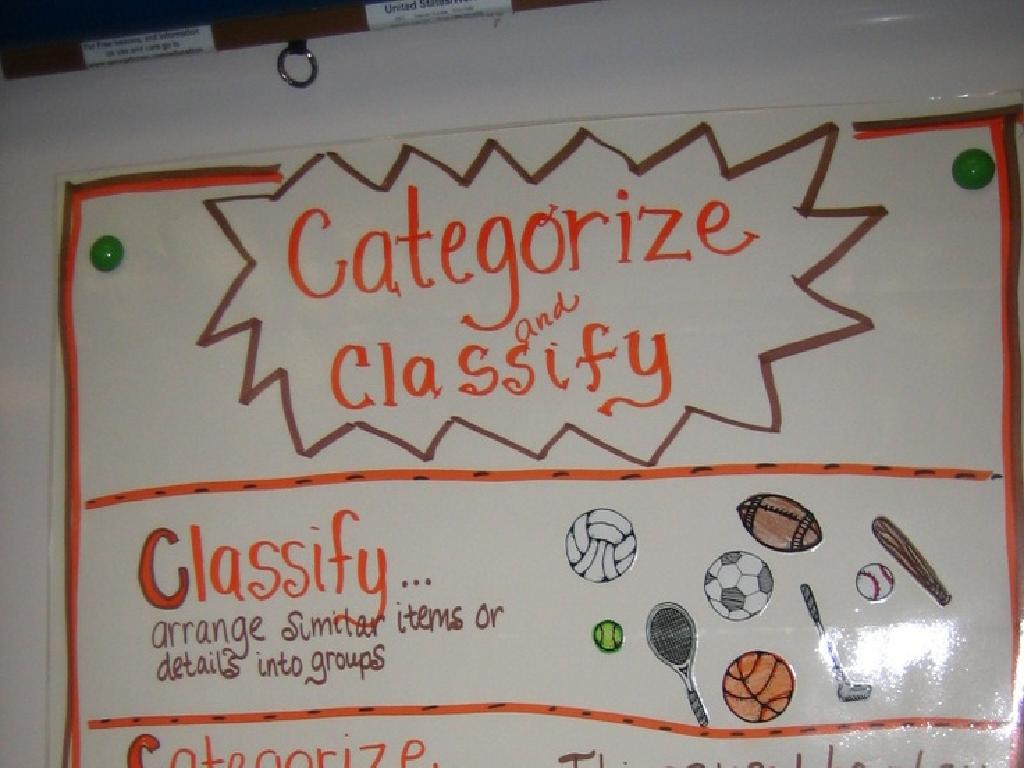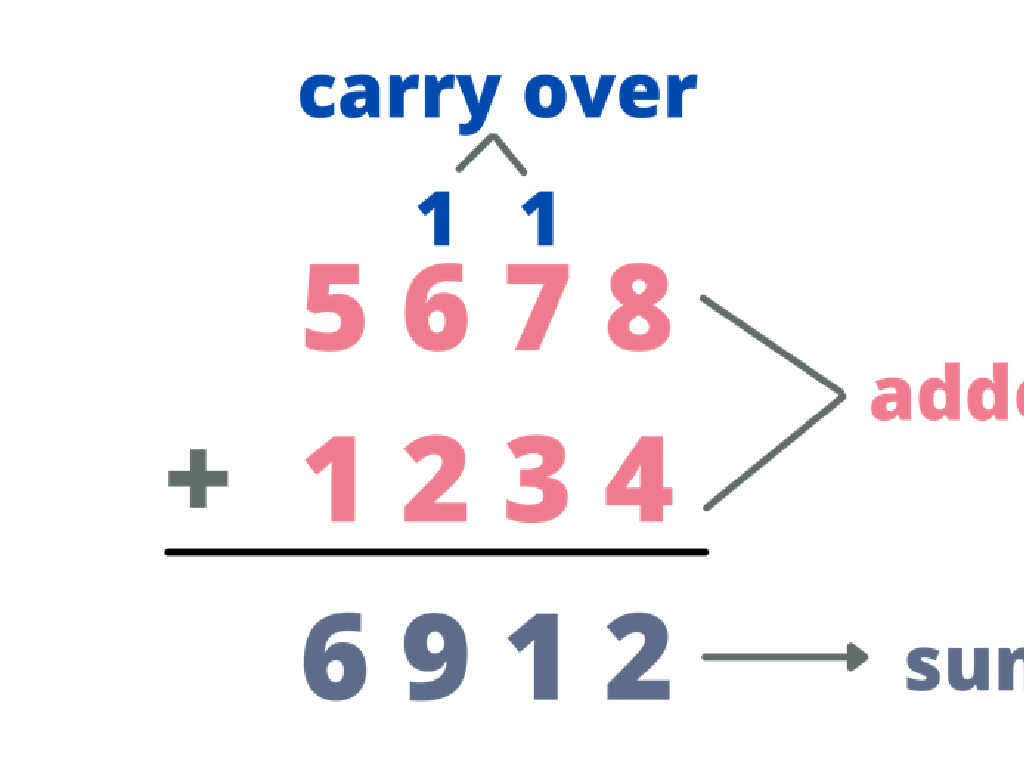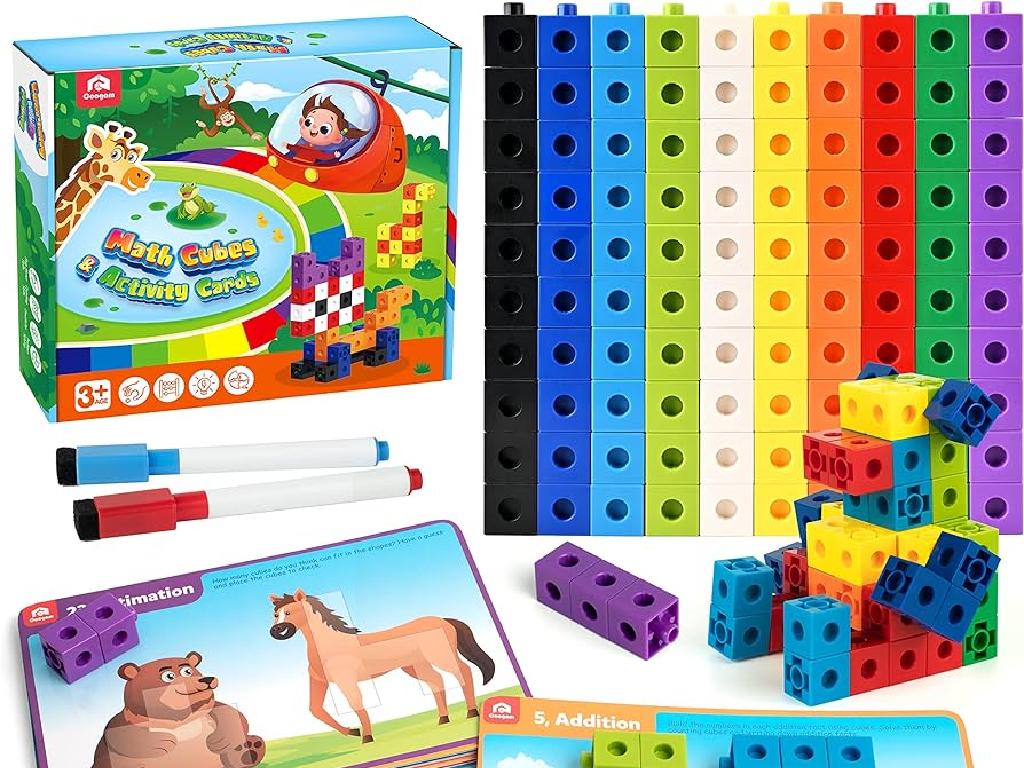Represent Numbers With Shapes - Up To 5
Subject: Math
Grade: Kindergarten
Topic: Counting To 5
Please LOG IN to download the presentation. Access is available to registered users only.
View More Content
Welcome to Counting with Shapes!
– Greet our young mathematicians
– Numbers and shapes are friends
– Shapes can represent numbers, like 3 triangles for the number 3
– Counting shapes up to 5
– We’ll count shapes together: 1, 2, 3, 4, 5
– Fun with numbers and shapes
– We’ll play games matching numbers to groups of shapes
|
This slide is designed to introduce Kindergarten students to the concept of counting using shapes. Start by welcoming the students and capturing their interest with the idea that numbers and shapes can work together. Explain that each shape can represent a number, and show them how to count using shapes, such as one star, two circles, etc., up to five. Use visual aids like shape cutouts or drawings to help them visualize the concept. Prepare interactive activities where students can practice matching numbers to the correct quantity of shapes. The goal is to make the learning process enjoyable and to lay the foundation for understanding numbers and quantities.
What Are Numbers?
– Numbers help us count
– Count fingers, toys, or cookies
– Numbers are used daily
– We see numbers on clocks, phones, and houses
– Exploring numbers 1 to 5
– One sun, two shoes, three trees, four wheels, five stars
– Representing numbers with shapes
|
This slide introduces the concept of numbers to Kindergarten students, emphasizing their role in counting and daily use. Start by explaining that numbers are symbols we use to tell us how many of something we have. Show them how numbers are everywhere in our lives, from the time on a clock to the number of steps we climb. Use visual aids to count from 1 to 5 with familiar objects, like fruits or animals. Then, transition to representing these numbers with shapes, such as drawing one circle for the number 1, two triangles for the number 2, and so on, up to five. This visual representation helps students grasp the concept of quantity and number recognition.
Learning Number 1 with Shapes
– Number 1 is a single shape
– Imagine 1 as one circle, alone and unique
– Find one object around you
– Look for any item that is by itself
– Saying ‘one’ as a class
– Practice counting with the word ‘one’
– Understanding ‘one’ represents a single item
|
This slide introduces the concept of the number 1 to Kindergarten students using a single shape to represent it. Start by showing them a single circle and explaining that this is what the number 1 looks like. Encourage the students to look around the classroom to find one object, such as one pencil or one book, to reinforce the concept of singularity. Have the class say ‘one’ together to practice counting and to solidify the understanding that the word ‘one’ represents a single item. This activity helps students visually and verbally connect the concept of the number 1 with real-world objects.
Learning Number 2 with Shapes
– Number 2 and two triangles
– Imagine two triangles together to represent 2
– Counting two objects
– Let’s count 1, 2 with two fun objects
– Two is greater than one
– Understand that 2 means one plus one more
– Practice with two shapes
|
This slide introduces the concept of the number 2 to Kindergarten students by associating it with a visual representation of two triangles. Encourage the children to visualize and draw two triangles to better understand the concept of the number 2. Engage the students in counting two objects, which could be anything from blocks to stickers, to reinforce the quantity that the number represents. Highlight that two is one more than one, helping them grasp the idea of quantity comparison. For the activity, provide various shapes and ask the students to pick out pairs of shapes to solidify their understanding of the number 2.
Learning Number 3 with Shapes
– Number 3 and three squares
– Imagine 3 squares to represent 3
– Find three books in class
– Let’s search for 3 books around us
– Three follows number two
– Remember, 3 comes right after 2
– Counting 1, 2, 3 together
– Practice counting up to 3 with items
|
This slide is aimed at helping Kindergarten students visualize and understand the concept of the number 3. Start by showing them how to represent the number 3 using shapes, such as squares. Encourage the children to find three of an item, like books, in the classroom to make the concept tangible. Reinforce the sequence of numbers by emphasizing that three comes after two. Engage the class in a counting activity where they count out loud from 1 to 3 using objects around them to solidify their understanding of the number 3. This hands-on approach helps children grasp the idea of counting and numbers in a fun and interactive way.
Learning the Number 4 with Shapes
– Number 4 is like four stars
– Imagine drawing 4 stars in the sky
– Counting four crayons together
– Let’s line up 4 crayons and count them: 1, 2, 3, 4
– Four is two plus two
– When we have 2 and add 2 more, we get 4
|
This slide is designed to help Kindergarten students visualize and understand the number 4 through the use of shapes and everyday objects. Start by showing them the concept of 4 using stars, which they can relate to and visualize easily. Then, move on to a hands-on activity where they count out four crayons, reinforcing the number. Explain that four can be made by adding two and two together, which introduces them to simple addition. Encourage the students to draw their own four stars and to find groups of four items in the classroom to count. This will help solidify their understanding of the number 4.
Learning Number 5 with Shapes
– Number 5 as five hearts
– Imagine drawing 5 hearts to represent the number 5
– Five is more than four
– If we have 4 items and add 1 more, we get 5
– Clap hands five times
– Let’s practice counting to 5 with claps
|
This slide is designed to help Kindergarten students visualize and understand the number 5. Use the example of five hearts to show that the number 5 can be represented with five of any shape or object. Explain that five is the next number after four, reinforcing the concept of counting. Engage the students with a physical activity by having them clap their hands five times to count to five. This kinesthetic approach helps solidify the concept of the number 5 in their minds. Encourage the students to draw their own five shapes on paper or use objects like blocks or stickers to represent the number 5.
Matching Numbers with Shapes
– Match numbers to shape groups
– See 3 triangles? Write the number 3!
– Count shapes as a group activity
– Let’s count stars together: 1, 2, 3, 4, 5!
– Each number equals shape count
– 4 circles? That’s the number 4!
– Practice with different shapes
– Try squares, circles, triangles!
|
This slide is aimed at helping Kindergarten students understand the concept of numbers by visually matching them with groups of shapes. The activity involves counting shapes as a group, which reinforces the idea that numbers represent quantities. For example, if there are three triangles, students should match them with the number 3. This exercise will be interactive, with the teacher guiding the students through counting various shapes and writing down the corresponding numbers. It’s important to use a variety of shapes to help students generalize the concept to different objects. The teacher should prepare different sets of shapes in advance and ensure that each student has a chance to participate in the counting and matching process.
Class Activity: Shape Count!
– Let’s play ‘Shape Count’ together!
– You’ll each get different shapes to count
– Match the number of shapes to the correct number
– Who can do it correctly? Let’s find out!
|
This activity is designed to help Kindergarten students practice counting to 5 and associating those counts with numbers through the use of shapes. Provide a variety of shapes (like circles, squares, triangles) to each student. They must count the number of each shape and then match it to the correct numeral. This hands-on activity not only reinforces counting skills but also helps with number recognition and the concept of quantity. For differentiation, some students may receive shapes with numbers up to 3, while others may work with numbers up to 5. Encourage students to help their peers if they finish early, fostering a collaborative learning environment.
Review and Goodbye: Numbers and Shapes
– Great job with shape counting!
– Numbers are fun and all around us
– Look for numbers at home or outside
– Say ‘bye’ to the numbers for now
– Keep practicing counting at home!
– Try counting toys, snacks, or steps
|
This slide is meant to wrap up the lesson on counting with shapes and to reinforce the idea that numbers are a part of everyday life. Encourage the children to keep practicing by counting objects around them, whether at home or outside. Remind them that numbers are not just for school but are everywhere, making the world a fun place to learn and explore. As a goodbye activity, have the children wave to the numbers, personalizing the concept and making it memorable. Suggest to parents to involve children in counting activities in routine tasks to further reinforce their learning.






